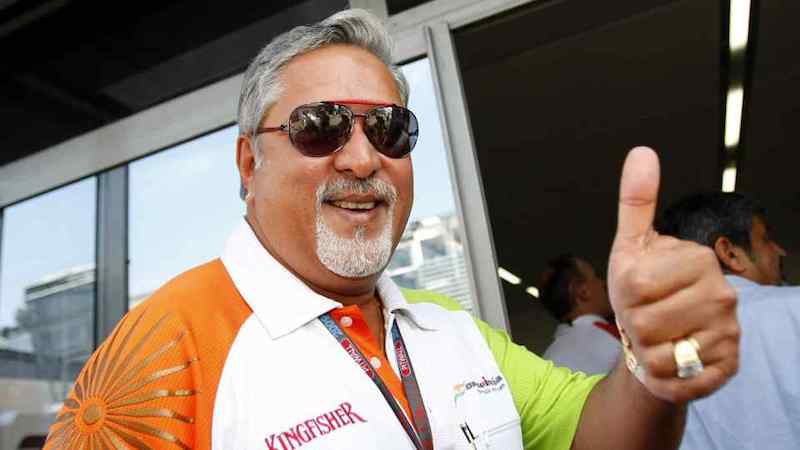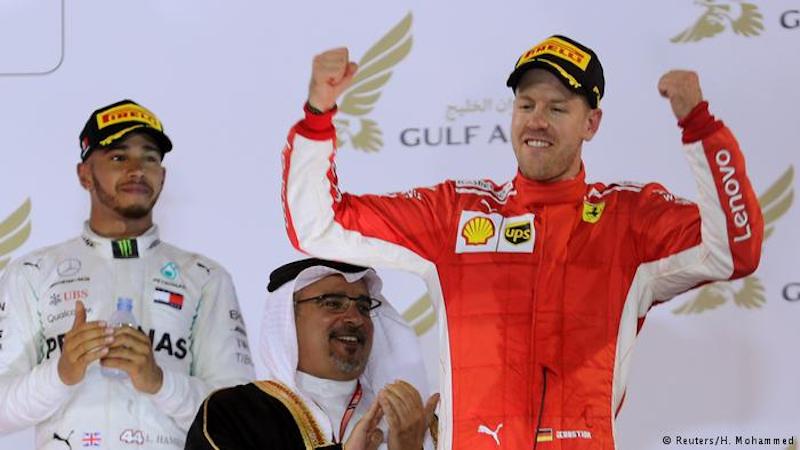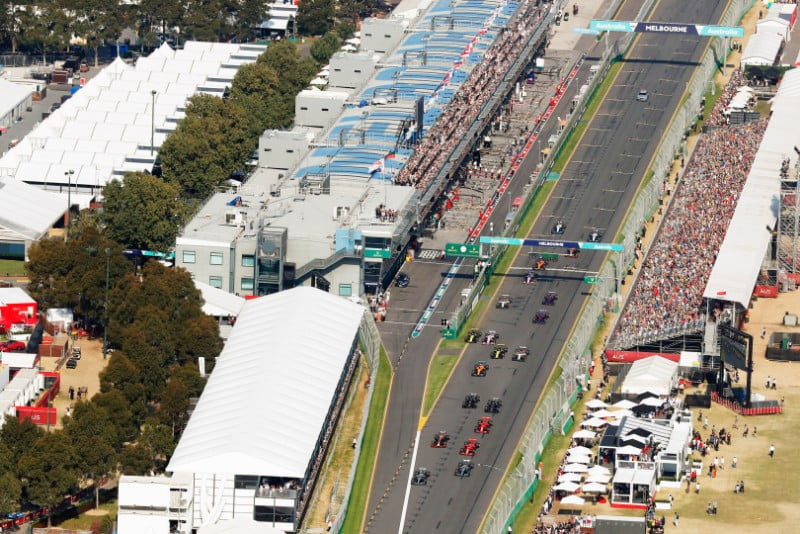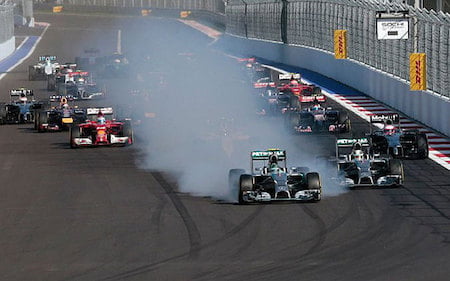The world of sport offers a unique irony — the passion for sport unites fans and followers all over the world, only to have rivalries split us apart instantly. However, one story that still unites fans despite having different favourites is the story of the underdog.
This column is a celebration of a decade of the Force India Formula 1 Team – the team that has consistently scored points, occasionally ended up on to the podium, but has always won hearts and applauses from the fans for their spirited performances.
In Formula 1’s sporting context, Force India is now considered as a benchmark – by pundits, commentators, drivers and even rival teams. However, the journey has definitely not been an easy one for the team given the preferential treatment that was shamelessly meted out (under Bernie Ecclestone’s era) for the top teams the sport.
Firstpost caught up with Vijay Mallya, Team Principal of the Force India Formula 1 team, the man whose vision has steered the team over the past decade. Mallya had launched the Force India Formula 1 Team and the team’s first car, the VJM01 in February 2008 in front of a global audience in Mumbai. At the launch event, Mallya had promised steady progress up the grid for his new team, and the team has delivered on his promise.
In their 10 seasons in the sport, the team has steadily climbed from 10th (2008) to fourth (2016 & 2017) in the Formula 1 Constructors’ Championship. The team’s performance in 2017 was a standout one given that they had a change in driver line-up, with Mercedes junior driver Esteban Ocon partnering the team’s veteran driver, Sergio Perez. In fact, each of Force India’s drivers individually scored more points than the team that finished fifth in the championship (Williams), such was their dominance among all the mid-field teams.
Given Formula 1’s recent eras of dominance, it is teams like Force India that offer fans much to cheer for – here’s to a decade of being a formidable force in Formula 1. Mallya talked about Force India’s progress over the last 10 years, their goals for the future and the possibility of an Indian Formula 1 driver. Here are some excerpts from the interview:
If there are two words to describe Force India’s progress in Formula 1, they have to be steady and bold. They have established themselves as the ‘best of the rest’ among the midfield teams. What are your thoughts on the team’s journey so far?
VJM: I’m extremely proud of how far the team has come in the last 10 years. In 2008, we were at the back of the grid and now we are the established fourth-placed team. That’s a huge achievement and it has been incredibly satisfying to achieve these results – beating teams such as Williams, Renault and McLaren in the process.
While Force India has established itself as the best performing midfield team, the team has even greater performances it could strive for – consistent podiums or even race wins. Are Force India happy being the ‘best of the rest’ or are they aiming to deliver much more?
VJM: At the moment there is a huge gulf that we need to close on the top three teams, but I’m still proud that we are ‘best of the rest’. We are racing against huge car manufacturers and we need to be realistic about what we can achieve with our own resources. So I’m satisfied and proud of the job we are doing, but hungry for even better results and podiums. The goal for the future is to maintain our position and start closing the gap to the teams ahead of us.
What are the challenges of being an independent (no car manufacturer backing) team and how do you overcome them with Force India?
VJM: Being an independent team brings positives and negatives. One positive is that we can choose our engine, and the alliance we have with Mercedes has proved to be an excellent strategic decision.
At the same time, we don’t have the luxury of a big car manufacture behind us and the resources this entails. It’s no secret we lack the financial might of Mercedes and Ferrari.
These privileged manufacturer teams also benefit from beneficial prize money arrangements, which further widen the gulf to the independent teams. It’s something that we’ve always believed has an impact on the health and competitiveness of the sport. A more equitable sharing of the prize fund would allow other teams, including Force India, to compete on a more equal footing. Until this is addressed, it’s unlikely we will see independent teams fighting for race wins every week.
In the meantime, we simply have to make the most of the resources that we do have and extract maximum performance from them. This is why it’s felt so special to emerge as the established fourth-placed team for the last two seasons.
We might not be able to win the race, but we can punch above our weight and achieve exceptional results. I take special satisfaction from reading experienced commentators of the sport calling us the ‘bang for buck world champions’. For pounds spent versus points scored, many observers have named us the most efficient team on the grid.
Ferrari is on a mission to help sister brands like Alfa Romeo and Maserati forge partnerships with other mid-field teams. After the Alfa Romeo-Sauber announcement, Mercedes’ Toto Wolff indicated they too could try something similar with their customer teams (Force India and Williams) — a move that could bolster the earnings of the mid-field teams and make them more competitive. Would you be interested?
VJM: I’m not going to answer a hypothetical question, but it goes without saying that we will always evaluate opportunities to take the best strategic decisions for the future of this team. We already enjoy a close working relationship with Mercedes and don’t forget that Esteban Ocon is a Mercedes junior driver.
Along with rules and regulatory changes, the new management is working on new car designs to appeal to the younger audiences. What do you think about the new designs?
VJM: From a personal viewpoint, the cars of the 1990s will always capture my imagination. It was when I first became closely involved in Formula One and those cars invoke special emotions in me and many others.
I also like the cars from the 1970s and 1980s – the cars I grew up watching on television.
At the same time, there’s no point longing for the past and we need to strike a balance between tradition and new technology. The new era of cars, including the new Formula E car, still look aggressive – even with the halo – and it’s important they are relevant for the younger generation of fans we are trying to attract to the sport.
Force India conducted an ambitious program in 2011 called the ‘One from a Billion Hunt’ to unearth young racing talent from India. Their current junior driver, Jehan Daruvala, was one of the finds of the program.
Is Daruvala on Force India’s radar for a junior driver test in 2018?
VJM: Testing opportunities are so limited these days and it’s hard to predict when Jehan will get the opportunity to drive a Formula One car. The priority is for Jehan to keep building on the progress he made in F3 last year. If he delivers strong results, I’m sure the opportunity will come to him but it’s impossible to put a time frame on something like this.
This exclusive interview was first published on Firstpost















4 comments On Mallya Exclusive: Satisfying To Be 'Best Bang For Buck' World Champions
Pingback: Perez: All Force India Needs Is Economic Support | Kunal's F1 Blog ()
Pingback: Force India: First Team To Have Sponsor Logos On The Halo? | Kunal's F1 Blog ()
Pingback: Ocon: New Formula E Car Looks Good, But How Fast Will It Go? | Kunal's F1 Blog ()
Pingback: Martini's Exit Cost Kubica His Seat At Williams For 2018? | Kunal's F1 Blog ()